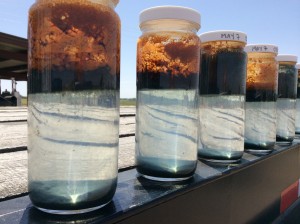
It’s seldom appreciated outside the energy industry, but drilling for oil, natural gas and natural gas liquids (NGLs) involves handling far more water than hydrocarbons. This isn’t just because production often involves pumping water into a well. Water is usually present naturally, and comes up with the oil and gas that is produced. Ideally in holding tanks the oil separates from the water and floats above it, although often some further treatment is required to isolate them. Following separation, the water needs to be disposed of safely. This is creating some growing challenges.

Much of the available data is fragmented because in the U.S. the states generally oversee Exploration and Production (E&P) activities except where on Federal land. As a result, the aggregated data that does exist relies in part on estimates because of differing standards of collection. In addition, the most recent data is still a few years old, and given the growth in domestic oil and gas production since then, today’s figures would be higher.
“Produced water” refers to any water that comes up along with hydrocarbons. Water occurs naturally in most plays and comes up with the extracted oil and gas. But it also includes water pumped into a mature well to force oil up (Enhanced Oil Recovery, EOR) and the flowback of water used in fracking. Any water that comes out of a well is deemed produced water and is subject to Federal rules on safe disposal. Sifting through the available studies, while the ratio of produced water to oil varies widely, it’s clear that we produce substantially more of the former. The water/oil ratio differs by region, by play and by age of well. With conventional drilling, early output typically favors oil and becomes less favorable over time. Produced water generally has no value, although not always; for example, iodide recovered from produced water in Oklahoma represents the largest source of iodine in the U.S. But generally, produced water is high in salt content and contains many unpleasant minerals including NORMs (Naturally Occurring Radioactive Material). Its disposal can represent a significant cost, and because increased water disposal reflects deteriorating well economics (since produced water volumes usually increase over time), installing water disposal infrastructure is often delayed.















